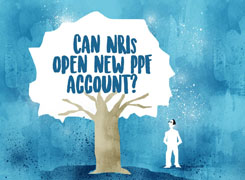Hi Sir I am 44 year old having EPF 32 lakh FD 34 lakh Mutual fund with SIP 70k amount 17 lakh one 3 bhk flat at Zirakpur(chandigarh) NPS 7 lakh .... Where should I have to invest now
Ans: Your savings journey reflects discipline and consistency. At 44, you are at a crucial phase where wealth protection is as important as wealth creation. Let's assess your current status and guide you toward smart next steps.
Existing Portfolio Assessment
Let us first understand how your portfolio stands:
EPF (Rs 32 lakhs)
This is a solid retirement base. EPF gives safe, tax-free growth. Continue contributing till retirement.
FD (Rs 34 lakhs)
It gives stability but low returns. Interest is taxable. Useful for emergencies or short-term goals, not ideal for long-term growth.
Mutual Fund (SIP Rs 70,000, total value Rs 17 lakhs)
This shows good investment habit. You have strong equity exposure through mutual funds, which helps in beating inflation.
NPS (Rs 7 lakhs)
Good for long-term retirement planning. Tax efficient. Conservative and disciplined by structure.
Flat in Zirakpur
While not treated here as an investment, it adds to your asset base. But no income or liquidity advantage unless rented or sold.
Now let’s move to the core: Where should you invest from now?
Wealth Creation Strategy Ahead
You have a good foundation. Next steps should ensure your money grows efficiently.
1. Reallocate from FD to Better Instruments
FD is earning low post-tax returns.
Move part of it (Rs 15-20 lakhs) to diversified mutual funds.
Choose actively managed funds. Avoid index funds.
SIP mode is best, but for lumpsum, use STP from a liquid fund.
Why not FD?
FD gives fixed returns but taxable. Over time, inflation eats into it.
2. Review Your Mutual Fund Structure
You invest Rs 70,000 per month. That’s powerful. But too many direct mutual funds or schemes can confuse.
Stick to 4-5 actively managed funds across different categories.
If you are investing in direct plans, reconsider.
Direct funds offer no advisory support. If markets fall, you may panic and exit.
Invest through a Mutual Fund Distributor (MFD) who is also a CFP.
You get guidance, goal alignment, and peace of mind.
Why avoid index funds?
Index funds blindly copy the market. They don’t protect during market fall.
Actively managed funds by good fund managers do better in most Indian cycles.
3. NPS – Let it Continue
NPS gives long-term stability.
But don’t overdepend on it.
It forces annuity after 60.
That restricts flexibility in retirement.
Continue your NPS for tax savings and base corpus. But combine with mutual funds for freedom.
4. Build Emergency Fund (If Not Done)
Keep 6 months’ expenses as liquid cash.
Use liquid funds or sweep FDs.
This avoids breaking SIPs during emergencies.
5. Insurance Audit (If Not Already)
Do you have a term insurance?
If not, get Rs 1.5 Cr cover till 60-65 years.
Avoid ULIPs or endowment policies.
If you have any, surrender and reinvest in mutual funds.
Goal Planning – What’s Next?
Now let’s break the upcoming milestones:
A. Retirement – 55 or 60?
You already have:
EPF: Rs 32 lakhs
NPS: Rs 7 lakhs
MF: Rs 17 lakhs (and growing)
FD: Rs 34 lakhs
Continue investing Rs 70,000 monthly in mutual funds. Increase by 5-10% yearly.
With this, and your current savings, you can build Rs 4-5 Cr retirement corpus. That’s enough for a simple and secure life post-retirement.
B. Child’s Education / Marriage
Assuming she is around 10-15 years old now.
You will need Rs 30-50 lakhs in 8-10 years.
Create a separate mutual fund SIP for this goal.
Allocate Rs 20,000 monthly only for this purpose.
This keeps your goals separate and trackable.
C. House Maintenance / Upgrades
Avoid buying another real estate now.
It is illiquid, risky, and difficult to exit.
Focus on financial assets instead.
If you ever want to shift or upgrade, liquid mutual funds will help.
Final Insights
FD and EPF make your portfolio conservative.
Mutual funds bring growth. Continue SIPs and increase slowly.
Avoid direct and index funds. Use an MFD-CFP for guided investments.
Keep goals separate. Track education, retirement, and contingency funds distinctly.
Don't let past good performance make you lazy. Regular reviews are important.
If market falls, don’t stop SIPs. Stick to the plan.
Avoid buying more real estate. Keep liquidity as priority.
You are already ahead of many investors at 44. Keep it disciplined. Keep it simple. Keep it goal-linked.
Best Regards,
K. Ramalingam, MBA, CFP,
Chief Financial Planner,
www.holisticinvestment.in
https://www.youtube.com/@HolisticInvestment





















